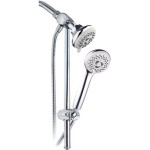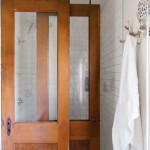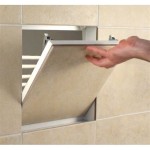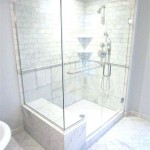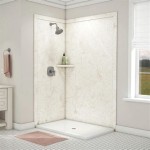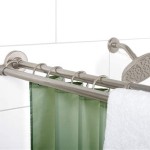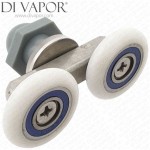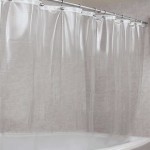What Is the Best Backer Board for Shower Walls and Floors?
When it comes to installing tile in your shower, choosing the right backer board is essential for a long-lasting and waterproof installation. Backer boards provide a stable and moisture-resistant base for your tile, ensuring that it remains securely in place and free from damage caused by moisture. With various types of backer boards available, selecting the best one for your shower can be overwhelming. This comprehensive guide will explore the different types of backer boards, their advantages, and disadvantages, to help you make an informed decision for your bathroom remodel. ## Types of Backer Boards ### Cement Backer Board (CBU) Cement backer boards are the most commonly used backer boards for tile installations. They are made from a mixture of cement, sand, and fiberglass mesh, which creates a strong and durable base for tile.Advantages:
- Waterproof and moisture-resistant - High strength and rigidity - Good sound insulation - Can be used on walls and floorsDisadvantages:
- Heavy and difficult to handle - Requires thin-set mortar for installation - Can be susceptible to cracking if not properly installed ### Gypsum Backer Board (GBB) Gypsum backer boards are similar to cement backer boards but are made from gypsum, a naturally occurring mineral. They are lightweight and easy to cut and install, making them a popular choice for DIYers.Advantages:
- Lightweight and easy to handle - Can be cut with a utility knife - Requires less thin-set mortar than cement backer board - Fire-resistantDisadvantages:
- Not as waterproof as cement backer board - Can be damaged by moisture if not properly sealed - Not suitable for use in areas with high moisture levels ### Fiberglass Mat Board (FMB) Fiberglass mat boards are made from a mesh of fiberglass fibers encased in a resin. They are lightweight, flexible, and easy to install, making them ideal for curved surfaces or areas with limited space.Advantages:
- Lightweight and flexible - Easy to cut and install - Conforms to curved surfaces - Mold- and mildew-resistantDisadvantages:
- Not as strong as cement or gypsum backer board - Requires additional support in some applications - Can be difficult to find in retail stores ### Waterproof Backer Board Waterproof backer boards are a newer option that is specifically designed for use in wet areas, such as showers. They are made from a variety of materials, including extruded polystyrene (XPS), polyvinyl chloride (PVC), and polyethylene terephthalate (PET).Advantages:
- Completely waterproof - Lightweight and easy to install - Resistant to mold and mildew - Some types can be installed without thin-set mortarDisadvantages:
- Can be more expensive than traditional backer boards - May not be as strong as cement or gypsum backer board ## Choosing the Best Backer Board The best backer board for your shower will depend on your specific needs and preferences. Here are some factors to consider when making your decision: -Moisture resistance:
For areas with high moisture levels, such as showers, waterproof backer boards are the best choice. -Strength and durability:
Cement backer boards offer the highest strength and durability, but they can be heavy and difficult to install. Gypsum backer boards are a good compromise between strength and ease of installation. -Ease of installation:
Fiberglass mat boards and waterproof backer boards are the easiest to install, making them ideal for DIY projects. -Cost:
The cost of backer boards varies depending on the type and size. Consider your budget when making your selection. ## Installation Tips Proper installation is crucial for the longevity and performance of your tile installation. Here are some general tips for installing backer boards in showers: - Ensure that the substrate (walls or floor) is level and free from any debris. - Apply a thin layer of thin-set mortar to the substrate and then place the backer board in place. - Use screws or nails to secure the backer board to the substrate. - Overlap the joints between the backer boards by at least 2 inches. - Apply a layer of waterproofing membrane over the backer board. - Allow the waterproofing membrane to dry completely before installing tile. ## Conclusion Choosing the right backer board for your shower walls and floor is essential for a secure and waterproof installation. By understanding the different types of backer boards and their advantages and disadvantages, you can make an informed decision that will ensure the beauty and longevity of your tile installation. Remember to follow proper installation techniques and always consult with a professional if you have any questions or concerns.
Tile Backerboard Material Options Fine Homebuilding

X Treme Tile Backer Board Mcdaids Bathroom Tiles

Diy Guide To Choosing And Installing Shower Tile Backer Board

Diy Guide To Choosing And Installing Shower Tile Backer Board

Tile Backer Board Breakdown Which One Is Best For Showers Diytileguy

Benefits Of Tile Backer Boards In A Wetroom Ccl Wetrooms

What Is The Best Backer Board For A Shower

How To Install Durock Cement Board Making Maanita

How To Install Cement Board For Tile Projects Diy Family Handyman

Choosing Installing A Tile Backer Board Checkatrade
Related Posts

